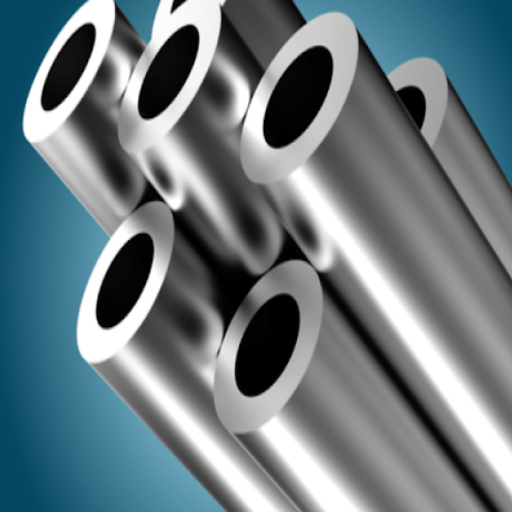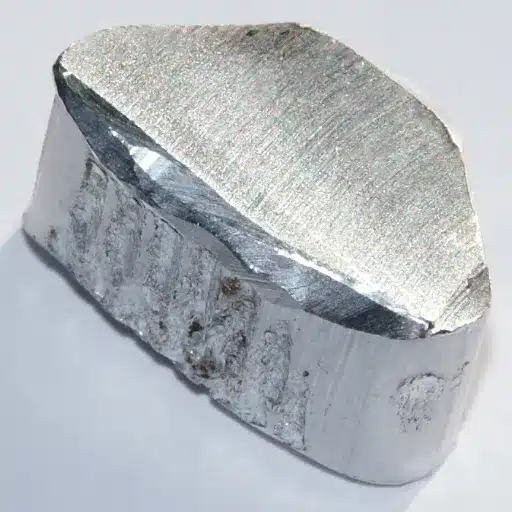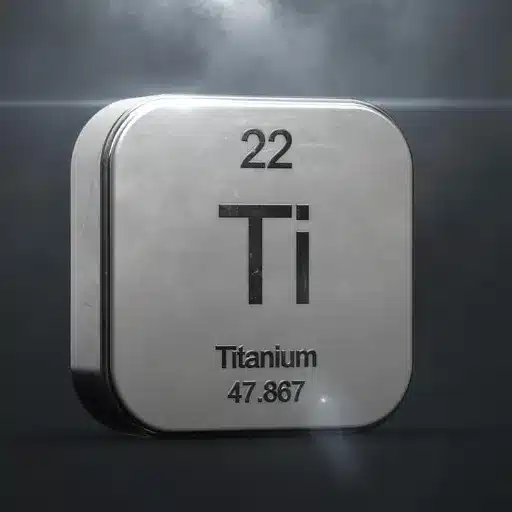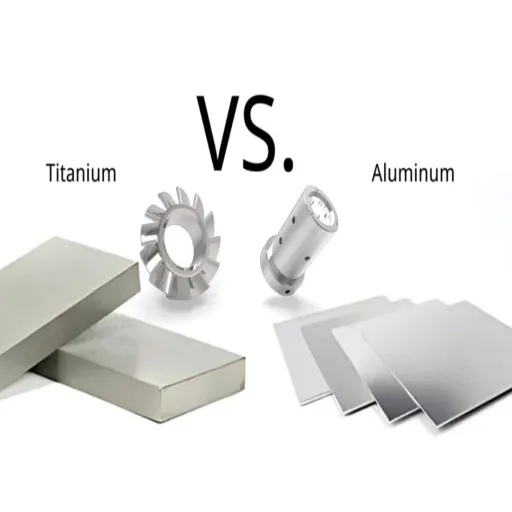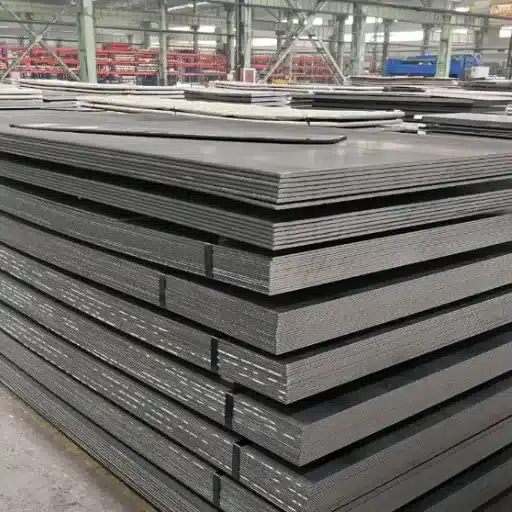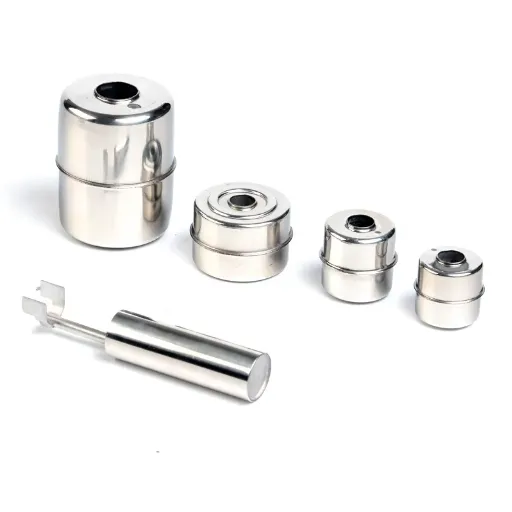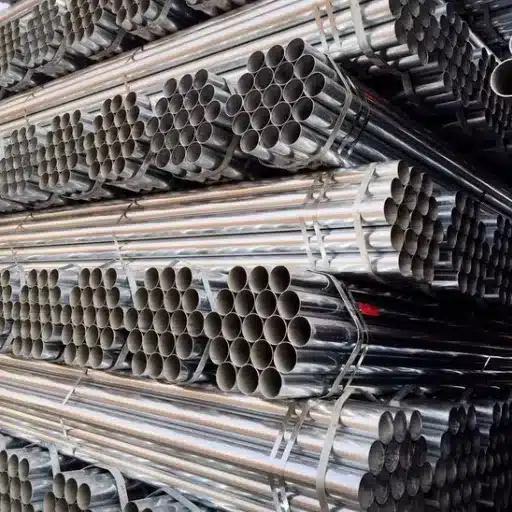Stainless steel is a go-to material across countless industries, valued for its strength, corrosion resistance, and versatility. Among its many grades, 304 and 304L stainless steel stand out as two of the most commonly used options. While they may seem similar at first glance, subtle differences in their chemical composition and mechanical properties can have a significant impact on performance depending on the application. This article will break down the key distinctions between 304 and 304L stainless steel, helping you make informed decisions when selecting the right grade for your specific needs. Whether you’re in construction, manufacturing, or engineering, understanding these differences is essential for optimizing durability, cost-efficiency, and functionality.
What are the 304 and 304L Stainless Steel Grades?
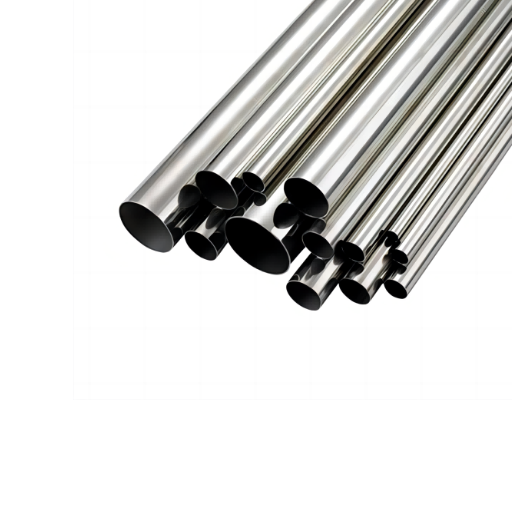
Characteristics of 304 Stainless Steel
304 stainless steel is an austenitic stainless steel widely known for its exceptional resistance to corrosion, strength, and flexibility. It is made chiefly from iron with chromium 18-20% and nickel 8-10.5%, which gives the alloy its resistance to oxidation and corrosion. Grade 304 is nonmagnetic when annealed, highly resistant to corrosive environments, including weak acids and chlorides, and diverse industrial applications.
A major advantage of 304 stainless steel is in its usage in harsh or elevated temperature conditions. It can withstand high temperatures of 870 °C (1598 °F) without compromising its structural integrity. 304 grade also has strong formability and weldability which make it suitable for manufacture of a wide variety of components without hindering their mechanical properties. Its use is common in sanitary food processing equipment, chemical containers, and aesthetically appealing architectural structures.
In the case of type 304 stainless steel, its usefulness in scenarios with elevated chloride concentrations where pitting and crevice corrosion might occur is negligible. It is not ideal for marine or highly saline applications when compared to other specialized kinds of stainless steel, because while 304 stainless steel is durable under standard conditions, these are not its standard conditions. Still, the versatility of 304 stainless steel makes it a top general-purpose choice, due to its balanced combination of traits.
Understanding 304L Stainless Steel
304L stainless steel is a lower carbon type of 304 stainless steel, aimed to improve its resistance to corrosion in certain applications. The lower carbon content reduces the chances of carbide precipitation during welding, which makes 304L highly usable in welded fabrics. This trait guarantees that the material preserves its corrosion resistance concerning the weld heat-affected zone, which is very important for sustaining mechanical reliability over time.
Intergranular corrosion pits are damaging in any environment, and this is where 304L stainless steel stands out most. Particularly in intergranular corrosion environments, 304L is quite effective. It is moderately effective with some amounts of acidic or chlorides, though caution is needed in high chloride, as it is not immune to pitting. Despite this, 304L remains a very good all-purpose grade stainless steel due to its low cost and wide range of applications.
Another defining feature of 304L stainless steel is its consistent retention of lower mechanical properties at reduced carbon content. Additionally, 304L stainless steel may be lower in strength than 304 stainless steel, but the advantages it offers in weldability and resistance to corrosion in the heat-affected regions are remarkable. All these factors make 304L stainless steel a preferred choice in the chemical processing, food and beverage, and pharmaceutical industries that require durable and sanitary materials.
Common Applications of 304 and 304L
Industries around the world often use 304 and 304L stainless steel due to its versatility and resistance to both corrosion and hygiene issues. It is highly used in the food and beverage sector because these materials can be found in storage tanks, preparation tables, brewing tanks and piping systems. The stainless steel is kept as it is unsanitary in nature thereby adhering to strict safety standards.
This type of steel is popular in the chemical industry too. Stainless steel 304 and 304L are used to construct these tanks, heat exchangers and evaporators because they come in contact with corrosive substances. Lowering the amount of carbon in 304L makes it more resistant to corrosion, especially in welded joints, which makes it a better option for highly chemical resistant environments.
Also, the pharmacy industry takes great advantage of 304 and 304L stainless steel. These grades were specially selected for cleanrooms, medical instruments and drug manufacturing machines because they are not reactive and thus will not threaten the attestation of pharmaceutical compounds. This makes them appropriate for harsh conditions with high hygiene standards because they ensure maximum durability and sanitization.
How Does the Chemical Composition Differ Between 304 and 304L?
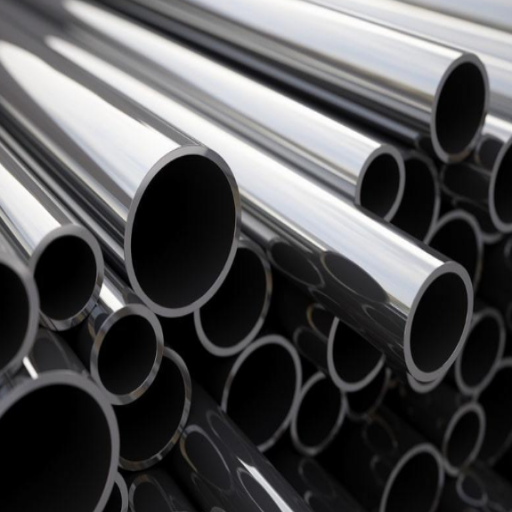
Comparing Carbon Content in 304 and 304L
The main difference that differentiates 304 and 304L stainless steel is carbon content. Type 304 usually has 0.08% carbon by weight, while 304L, the low-carbon version, contains a maximum of 0.03% carbon. This difference affects their performance in numerous applications, particularly in places where welding is a requirement. The lower carbon content in 304L reduces the likelihood of carbide precipitation during welding, which can result in intergranular corrosion. This type of corrosion happens when chromium carbides form at the edges of grains, known as boundaries, depleting adjacent areas of chromium and subsequently weakening the material’s strength against corrosion.
The 304L portion is also the preferred choice for applications that involve annealing after welds due to the low carbon content of 304L. For example, pharmaceutical devices and cleanroom equipment face rigid welding procedures that may utilize 304L to protect stainless steel from the extreme temperatures. In doing so, 304L avoids carbide precipitation and consequently eliminates the need for having to perform extensive post-weld treatments to meet cleanliness and strength requirements. On the other hand, 304 is most useful in applications not concerned with welding since it excels in corrosion resistance and superb mechanical properties.
It is important to highlight that the reduction in carbon content has a minor impact on the strength profile of 304L in comparison to 304. Tend to both alloy types usually meet or exceed the industry requirements regarding the stainless steel strength, the lower carbon version may demonstrate slightly lower values of tensile and yield strength. Despite this, the enhanced resistance of 304L to environmental and chemical attack makes its use more suitable where service life is longer and is used in harsh conditions, while still adhering to rigid industrial and environmental policies. This compromise best illustrates the reason for the selection of materials for a specific application and not one for all when talking about 304 and 304L.
The Role of Chromium and Nickel in Stainless Steel
Chromium and nickel are key alloying elements of stainless steel because of the unique properties they impart to the material for its various uses. Chromium is the most critical alloying element since it provides the steel’s corrosion resistance and typically makes up at least 10.5% of the steel’s composition. Stainless steel is durable in corrosive environments because chromium combines with oxygen to create a passive chromium oxide surface layer, which is non-reactive, self-repairing, and prevents further oxidation and deterioration, even in extreme conditions.
Nickel improves stainless steel’s ductility, toughness, and formability. It strengthens the austenitic structure, preventing the stainless steel from transitioning to face-centered cubic (FCC) crystal structure at lower temperatures. This structural stability ensures excellent mechanical properties like toughness at extreme temperatures and impact resistance. Moreover, nickel improves corrosion resistance to chloride containing marine environments and enhances weldability.
Nickel and chromium allow stainless steel to fulfill tight requirements across food processing, construction, and chemical manufacturing. Advancements in material science are actively looking to achieve a better balance of these elements to fine-tune the alloy’s performance for more specialized uses.
Exploring Carbide Precipitation
Carbide precipitation, or sensitization, is a term used to defined a metallurgical processes that occurs in alloys of stainless steel when maintained under specific temperatures – usually between 800°F and 1600°F (427°C and 870°C). During this stage, chromium combines with carbon to develop chromium carbides which are more likely to form along the grain boundaries, which depletes adjacent areas of chromium. The localized depletion of chromium weakens the material’s corrosion resistance, especially intergranular corrosion.
The problem of carbide precipitation occurs more frequently in austenitic stainless steels. This is due to the carbon-rich material and the structural form’s capacity to hold carbon when heated. To alleviate this, most modern stainless steels are manufactured with controlled carbon content, and some even below 0.03% by weight (these are classified as low carbon grades such as 304L or 316L), or with Titanium or Niobium as stabilizer elements designed to preferentially form carbides and decrease sensitization risks.
Solution annealing and similar post-weld heat treatments effectively dissolve formed carbides and restore uniformity of chromium distribution. Recent efforts in metallurgical engineering include the use of stabilized or dual-stabilized stainless steels and the refinement of welding practices to reduce thermal cycling to the sensitization region. Ongoing studies aimed at improving carbide control seek to strengthen the long-term corrosion resistance of stainless steel used in critical applications like aerospace, medical technology, and nuclear power.
What are the Mechanical Properties of 304 and 304L?
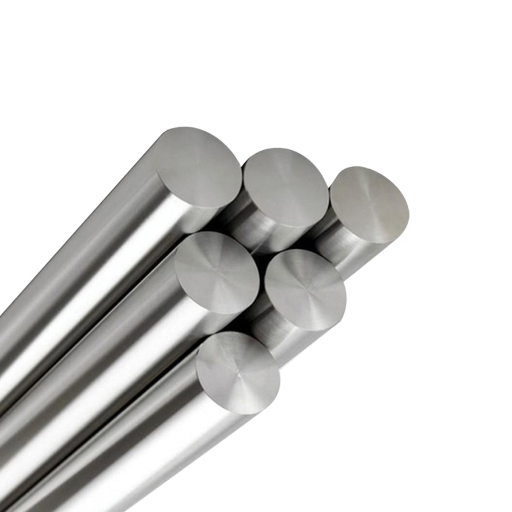
Differences in Tensile Strength and Yield Strength
The fundamental mechanical distinction between 304 and 304L stainless steel is in their tensile and yield strength values, which are different due to their carbon content. 304 stainless steel grade types tend to have greater tensile strength with values between 75,000 and 85,000 psi (515 and 586 MPa) as well as a yield strength of approximately 30,000 to 40,000 psi (205 to 276 MPa). This Greater tensile strength allows 304 to be used in applications where structural integrity is critical.
On the other hand, 304L type tends to have lower tensile strength with values between 70,000 and 80,000 psi (483 and 552 MPa) and lower yield strength of approximately 25,000 to 35,000 psi (170 to 241 MPa). This lower strength is the result of a reduced carbon content, which has less than 0.03% carbon in 304L. While the lower strength reduces load-bearing capacity of the material, it greatly improves the weldability as well as lowers susceptibility to carbide precipitation during high temperature exposure or welding.
The application of each alloy is determined most fundamentally by the difference in mechanical properties of each alloy. 304 is often used in applications where strength and durability are critical, like structural parts and industrial tanks.At the same time, 304L works better for applications which require heavy welding. It also works better in highly corrosive environments like in chemical processing equipment and in piping systems. These differences permit engineers to choose the appropriate material for specific operating conditions while guaranteeing enduring performance and dependability.
Impact of Lower Carbon Content on 304L
The lower amount of carbon in the 304L stainless steel alloy fundamentally changes the material’s constituent properties; this is especially noteworthy in the case of welding as well as in the case of the corrosion resistance of the material. By keeping the carbon content to ≤ 0.03%, the 304L grade steel manages to eliminate the likelihood of carbide precipitation during welding. This factor helps avoid intergranular corrosion, which most commonly happens when the material is put through a lot of carbon-rich rich, 304 undergoes a lot of heat cycles.
The less sensitization 304L grade exhibits makes it suited for high extensive welding applications, also for the construction of pressure vessels, piping systems, and storage tanks. Also, in this case low carbonate is much more advantageous because it provides mechanical stability in parts of the world where corrosive substances such as chlorides or acidic solutions are present for significant periods of time.
On looking at the microstructure, one can say that 304L keeps an alloy in the austenitic phase and keeps the temperature at a lower limit, eliminating any chance of a phase chang,e which could lead to the loss of ductility or toughness. Some studies have shown that components made of 304L last longer and need less maintenance in the chemical process industry, food processing industry, and marine industry, which need materials that resist corrosion and can be welded easily.
How Does Corrosion Resistance Compare in 304 vs 304L?

Factors Affecting Intergranular Corrosion
Intergranular corrosion is most extensively affected by the microstructural changes due to the thermal exposure of the material, more so for stainless steels 304 and 304L. One of the most important driving phenomena is the precipitation of chromium carbides at the grain boundaries while the material is heated between 800°F to 1500°F (427°C to 815°C). Sensitization, as it is referred to, reduces the amount of chromium available in the vicinity, thereby depleting the region that is required to form the passive oxide layer vital for corrosion resistance.
The alloy’s carbon content is also another primary consideration. 304 alloy is far more vulnerable to sensitization due to heightened carbide precipitation. This is because it has a higher carbon concentration. 304L, on the other hand, with a lower carbon content capped at 0.03%, reduces the risk of sensitization by lessening carbide precipitation during thermal exposure, keeping intergranular corrosion resistance intact.
Other factors affecting intergranular corrosion are the time of exposure to the sensitizing temperatures and the rate of cooling after thermal processes like welding. For example, rapid cooling immediately after welding inhibits the precipitation of carbides within the grain boundaries, and this enhances corrosion resistance of 304 and 304L grades. Furthermore, the exposure of the alloy to the environment, like immersion into solutions containing high concentrations of chlorides or oxidizing media, can exacerbate intergranular assault on attack if sensitized regions exist.
Having knowledge of these factors, as well as controlling them, is essential for choosing the right grade of stainless steel and applying the necessary precautions to delay material failure in order to maintain optimal performance in harsh industrial operations.
Performance in Corrosive Environments
While evaluating the performance of stainless steel under corrosion conditions, factors such as pH value, the quantity of chlorides, temperature, and the presence of oxidizing agents need to be examined. For example, high concentrations of chlorides may worsen pitting and crevice corrosion, especially in stainless steels with a low molybdenum or chromium content. Alloys like 316 and 317, due to the increased molybdenum additions, are less susceptible to these conditions than 304 or 304L grades.
Temperature changes also affect the rate of corrosion. Increasing the temperature typically speeds up chemical reactions, which can worsen the efficiency of the protective passive oxide layer on stainless steel. The critical pitting temperature (CPT) limit of the alloy greatly determines the alloy and cement’s ability to aggress and attack, which indicates how careful one has to be with monitoring temperature during certain processes.
Moreover, some alloying developments, like adding nitrogen or special coating, have improved resistance to certain conditions. Electro-polishing and surface treatment of the material enables better uniformity of the protective layer, making the material last much longer under extreme industrial conditions such as those encountered in marine, chemical processing, oil, gas, and other advanced instrumental industries. With modern metallurgical advances, engineers integrate all of the factors to decide on the proper stainless steel grade and formulate systems that are durable yet economical in corrosive operational environments.
The Influence of Chloride on Stainless Steel
The integrity of components made from stainless steel will be compromised over time because of the presence of chloride ions. This is especially true in marine environments, seawaters, and chemical processing units where the concentration of chlorides is high. The reaction of chlorides with stainless steel results in pitting and crevice corrosion, which are forms of localized corrosion and are highly destructive to a material’s structural integrity. Due to the presence of alloying elements such as molybdenum and nitrogen, which strengthen the passive film, the resistance of stainless steel to corrosion caused by chlorides varies greatly depending on the grade of the stainless steel.
For example, 304 stainless steel is greatly outperformed by 316 and 316L grades that have 2% to 3% molybdenum added, as they are far more resistant to chloride ions. However, 316-grade materials require extra protective measures to be able to withstand sustaining localized corrosion for more than a decade, and still succumb to vicinities of more than 1000 ppm chlorides. Such conditions are now more commonly encountered where advanced duplex and super duplex stainless steels are used, which have far superior PREN, and thus enhanced performance in hostile environments with high concentrations of chlorides, pitting, or even crevice corrosion.
Selection processes for these materials still rely on predictive methods like cyclic polarization testing and critical pitting temperature analysis. Hence, for the structural integrity and lasting reliability of stainless steel in high chloride environments, maintaining or eliminating these conditions through protective design modifications, coatings, or better materials is essential.
Should I Choose 304 or 304L for My Application?
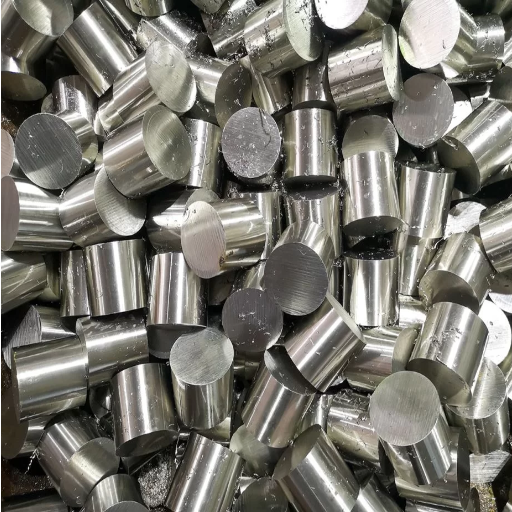
Considerations for Weldability
Welded structures involving extensive welding require careful consideration of weldability when choosing between 304 and 304L. Both types are austenitic stainless steel, which means they have a low carbon content, and both possess excellent weldability and metallurgical properties. However, the key difference lies in the amount of carbon. 304L has a maximum carbon content of 0.03% while standard 304 has an upper limit of 0.08%.
The lower carbon content in 304L means that it is less likely to form carbides at the grain boundaries during welding. Senstizitation, in terms of welding, refers to intergranular corrosion that may occur over time due to aggressive environments. Because of this, 304L tends to be the preferred choice for structures that are welded and require resistance to corrosive environments or undergo post-weld heat treatment (PWHT), which involves heating and cooling cycles after welding. 304 may be used for components that are welded together and are not subjected to high temperatures or critical corrosion resistance.
Mechanical aspects must also be taken into account. 304 and 304L alloys possess nearly equal strength and formability, but due to differing carbon content, one may be slightly stronger in yield strength than the other. For most applications, the yield strength benefits of 304 outweigh the long-term benefits that 304L offers in corrosion resistance. Regardless of the grade selected, proper welding procedures, including control over the shielding gases, filler materials, and heat input balance, are critical to sustaining the universal excellence of workmanship.
In the end, the decision of which stainless steel to employ for weldability 304 or 304L requires deep consideration of the operational atmosphere, the relational mechanical and chemical forces at play, and the conditions after the weld is completed. Taking these into account guarantees the selection of a material that ensures operational performance, longevity, and economic viability.
When to Opt for Higher Corrosion Resistance
Requirements for higher corrosion resistance should be considered first in cases where there are aggressive chemical attacks, high-temperature conditions, or excessive vapor or high-temperature humidity. Stainless steel grades 316 or duplex stainless steels have greater resistance to pitting, crevice corrosion, and stress corrosion cracking due to chloride. These materials are best suited for use in marine applications, chemical processing plants, and medical equipment or apparatus where there is chloride, acid, or alkaline solution exposure, which accelerates degradation of materials.
Alloy selection for higher corrosion resistance also has to consider the service life and maintenance frequency of the application. For example, a lack of molybdenum in grade 316 diminishes its ability to resist corrosive agents, therefore making this alloy unsuitable for applications requiring extended operational reliability with minimal maintenance. In addition, duplex stainless steels offer greater strength and resistance to localized corrosion due to their microstructure consisting of austenitic and ferritic phases, making these increasingly common in more demanding industrial applications.
Component failure and maintenance costs over time in relation to the need for added corrosion resistance can only be determined by thorough material testing and understanding environmental factors.
Compared to 316 Stainless Steel
316 stainless steel is held in high esteem as a benchmark material because of its oxidation resistance, especially in chloride-rich environments, due to the presence of molybdenum. While 316 stainless steel performs adequately for a range of industrial tasks, duplex stainless steels outshine it in several critical factors. For example, duplex grades usually have higher mechanical strength, yielding a tensile strength often two times greater than 316 stainless steel. This means thinner materials can be used in structural components, which lowers weight without sacrificing strength.
In addition, duplex stainless steels have greater resistance to stress corrosion cracking (SCC), which is a frequent failure mode in high temperature, high pressure hot environments. 316 stainless steel is prone to SCC in the presence of chlorides and temperatures over 140°F (60°C). In contrast, duplex grades are designed to endure such conditions which significantly enhances their operational lifespan.
Duplex stainless steels offer better performance cost-wise as well. Even though 316 stainless steel is cheaper, other expenses associated with increased maintenance, reduced durability, and shorter service life make the initial expenditure worth it. This justifies selecting duplex stainless steels as materials for critical constituents of chemical processing, oil and gas, and marine applications where environmental conditions are particularly aggressive.
References
- Marlin Wire – This source explains the carbon content differences and their implications for the two grades.
- ThoughtCo – Offers a detailed explanation of the properties and applications of 304 and 304L stainless steel.
- Austral Wright Metals – Highlights the carbon content difference and its significant impact on the material’s performance.
Frequently Asked Questions (FAQ)
Q: What is the primary difference between 304 and 304L stainless steel grades?
A: The primary difference between 304 and 304L stainless steel grades is the carbon content. 304L has a lower carbon content of 0.03% compared to 304, which helps in reducing the risk of intergranular corrosion after welding.
Q: Why is 304 stainless steel so widely used?
A: 304 stainless steel is widely used because it offers excellent resistance to a wide range of environments and corrosive media, making it suitable for various applications, especially where high strength and corrosion resistance are required.
Q: What applications are best suited for 304L stainless steel?
A: 304L stainless steel is best suited for applications where welding is required. Its lower carbon content than 304 helps prevent carbide precipitation during welding, reducing the risk of intergranular corrosion.
Q: How does the lower carbon content of 304L affect its properties?
A: The lower carbon content in 304L reduces the risk of intergranular corrosion, particularly in applications where welding is necessary. It allows 304L to be used instead of 304 in certain applications, although it may have slightly reduced strength compared to 304.
Q: Can 304L stainless steel be used in high temperature environments?
A: 304L can be used in high temperature environments, but it may not offer the same temperature strength as 304 stainless steel. The lower carbon content of 304L may slightly affect its high temperature performance.
Q: What’s the difference in strength between 304 and 304L stainless steel?
A: One key difference in strength between 304 and 304L is that 304 generally has higher tensile and yield strength due to its higher carbon content. However, 304L is preferred in applications requiring welding due to its lower risk of corrosion.
Q: Are there any situations where 304 ss might lead to intergranular corrosion?
A: Yes, 304 ss might lead to intergranular corrosion if it undergoes welding or high temperature heat treatment without subsequent annealing, due to its higher carbon content which can lead to carbide precipitation at grain boundaries.
Q: How do 304 and 304L resist pitting corrosion?
A: Both 304 and 304L stainless steel grades exhibit excellent resistance to pitting corrosion in neutral environments. However, neither is ideal for environments with high concentrations of chlorides, where more resistant alloys might be necessary.
Q: What are some common metal products made from 304 stainless steel?
A: Common metal products made from 304 stainless steel include kitchen sinks, food processing equipment, chemical containers, and architectural paneling, due to its excellent resistance to a wide range of corrosive environments.
Q: Why would someone choose to use 304L instead of 304 stainless steel?
A: Someone might choose to use 304L instead of 304 stainless steel when the application involves welding, as the lower carbon content of 304L reduces the risk of welding-related corrosion without the need for further heat treatment.

